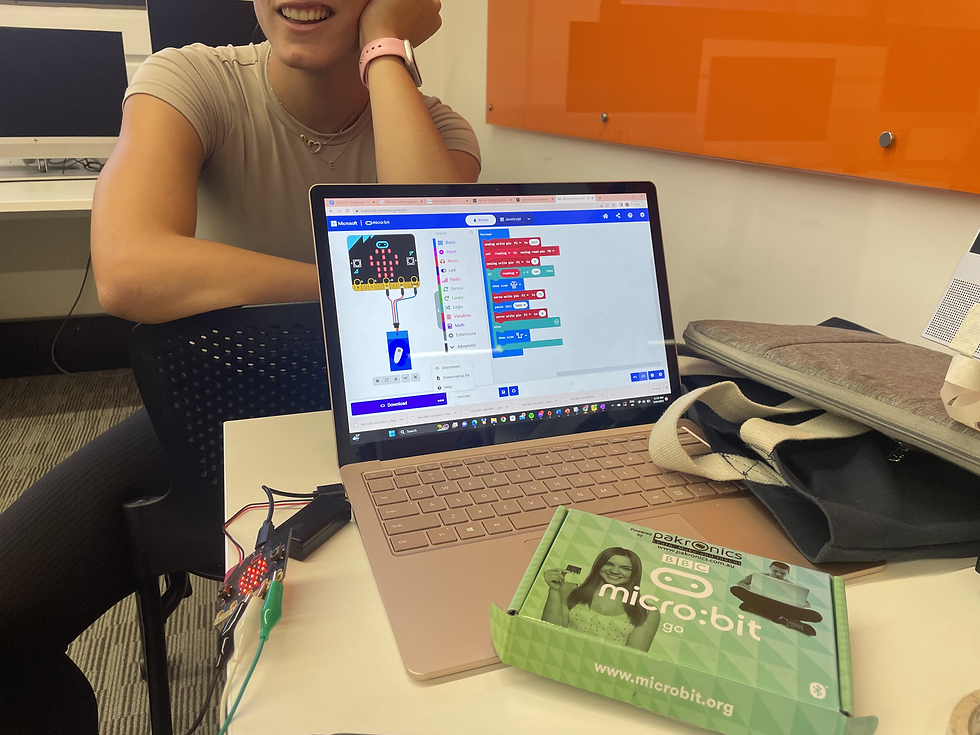Week 7: Constructionism in the classroom
- Zoe Lennon
- Apr 5, 2023
- 3 min read
The impact of Piaget shaped Papert’s (1980) paradigm of constructionism, highlighting that learning is reconstructing from new knowledge when people are engaged in constructing personally meaningful products. Constructionism lives on today through the makers movement and makerspaces which refers to a space of production, blending digital and physical technologies and sharing processes and products to explore, learn and create (Halverson & Sheridan, 2014)

Constructionism brings creativity, exploring, building and presentation to the forefront of the learning process (Donaldson, 2014). By providing students with tools and resources, teachers encourage experimentation, promote collaboration, and allow for personalised learning, all of which aid in creating a learning environment that nurtures creativity and innovation (Blum-Ross, Kumpulainen & Marsh, 2020). A way of promoting this within a classroom is by using the technology Micro:bit. The Micro:bit is a tiny, programmable computer designed to be easy to use and accessible for students beginning to explore and code electronics (Micro:bit, 2023).
(Micro:bit Educational Foundation, 2021)
Micro:bit can be used creatively in a Stage 3 classroom by allowing students to design and produce an automatic watering system, integrating the use of a Micro:bit. Satisfying the outcome ST3-2DP-T (NESA, 2017), the activity enables a transformation of students from being passive receivers of knowledge to real-world makers, empowered to design, build, (Source: Zoe Lennon)
and share their own amazing creations
(Martinez & Stager, 2014). Allowing students to have an active role in their learning effectively promotes meaningful connections to be made (Silva, Farias & Mesquita, 2021). Further, it provides the basis for students' curiosity and imagination to flourish, developing their skill sets, specifically collaboration, digital literacy, problem-solving and innovation (Halverson & Sheridan, 2014). Constructing a makerspace within the classroom allows students to guide, challenge and learn from each other, enabling new ideas to be explored (Martinez & Stager, 2014).
Using Micro:bit in the EDUC3620 tutorial (Source: Zoe Lennon)
Implementing Micro:bit and makerspaces into a classroom may arise challenges (Wu et al., 2021). Students may experience technical challenges with the connectivity and programming processes of Micro:bit, which can be difficult for inexperienced learners, leading to decreased engagement and loss of valuable learning time (Chen & Fragomeni, 2020). Furthermore, whilst Micro:bit provides an effective introduction to coding, it is limited and students may need additional tools to foster their creativity and explore features that are outside Micro:bit’s capabilities. Educators should be aware of these and become experienced with the technology to minimise challenges and ensure productive and meaningful learning outcomes for students.
References
Blum-Ross, A., Kumpulainen, K. & Marsh, J. (2020). Enhancing digital literacy and creativity: Makerspaces in the early years. Routledge.
Chen, J. & Fragomeni, G. (2020). Augmented reality and microbit for project-based learning. Springer International Publishing AG.
Donaldson, J. (2014). The maker movement and the rebirth of constructionism. Hybrid Pedagogy.
Halverson, J. & Sheridan, K. M. (2014). The Maker Movement in Education. Harvard Educational Review, 84(4), 495–505.
Martinez, S. & Stager, G. (2014). The maker movement: A learning revolution. Learning & Leading with Technology, 41(7), 12–17.
Micro:bit. (2023). BBC micro:bit. https://microbit.org/
Micro:bit Educational Foundation. (2021). Introduction to the BBC micro:bit. Youtube. https://youtu.be/u2u7UJSRuko
NSW Education Standards Authority [NESA]. (2017). Science and technology, K-6 syllabus.
Papert, S. (1980). Mindstorms: Children, computers and powerful ideas. Basic books.
Silva, R., Farias, C. & Mesquita, I. (2021). Cooperative learning contribution to student social learning and active role in the class. Sustainability, 13(15).
Wu, Y., Lu, C., Yan, J., Chu, X., Wu, M. & Yang, Z. (2021). Rounded or angular? How the physical work environment in makerspaces influences makers’ creativity. Journal of Environmental Psychology.





Hello Zoe!
I found your blog post to be very useful and fascinating to read. You did a great job of addressing the usage of microbits in encouraging creativity and offering a critical assessment on pedagogical difficulties. However, in my opinion, your blog post might be strengthened by including more specific examples and case studies of effective implementation. This might make it easier for readers to comprehend how to incorporate Micro:bit into already-existing curriculum and the kinds of learning outcomes that are possible. Also, I believe it would be beneficial if you included more detailed instructions on how to handle any difficulties that might arise when using Micro:bit in the classroom. You may, for instance, go over methods for reducing technical…
Hi Zoe,
This is such a great blog post, I really enjoyed reading it. You have provided a great definition of constructionism and how it can be used in the classroom. You have outlined the appropriate stage level that students should use the micro:bit. What type of class would you use the micro:bit in? You have provided a great example of the activity students could use, is this in science classes? You have also shown the benefits of using the micro:bit and analysed how it fosters a range of different skill sets for students – this is great! The limitations you have included are correct and very important for teachers to consider before implementing the micro:bit into their classes.
Great…
Wow. You've written a really incredible, well-researched post about constructionism. The link you made to the syllabus is excellent, and the activity is perfect to do with a Stage 3 class. I really like how you explained that students can build many skills, not just creativity, by completing these activities. The limitations that you've mentioned are completely correct, and it's great that you could address them.
Overall, you have a really incredible blog, and you should be extremely proud of the work you have put in; your efforts have not gone unnoticed!
05/04/2023